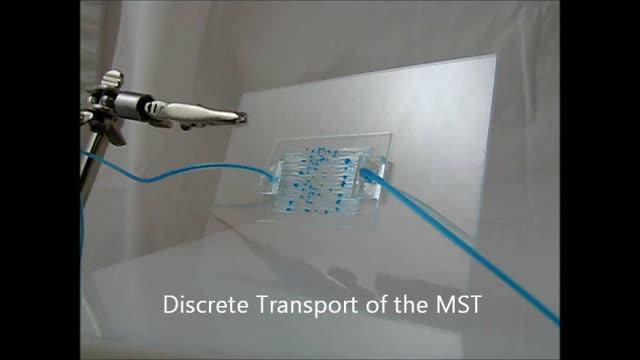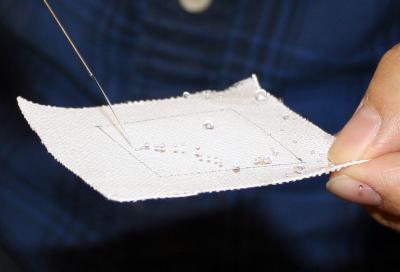"We intentionally did not use any fancy microfabrication techniques so it is compatible with the textile manufacturing process and very easy to scale up," said Xing, lead graduate student on the project.
It's not just that the threads conduct water through capillary action. The water-repellent properties of the surrounding fabric also help drive water down the channels. Unlike conventional fabrics, the water-pumping effect keeps working even when the water-conducting fibers are completely saturated, because of the sustaining pressure gradient generated by the surface tension of droplets.
The rest of the fabric stays completely dry and breathable. By adjusting the pattern of water-conducting fibers and how they are stitched on each side of the fabric, the researchers can control where sweat is collected and where it drains away on the outside.
Workout enthusiasts, athletes and clothing manufacturers are all interested in fabrics that remove sweat and let the skin breathe. Cotton fibers, for example, wick away sweat — but during heavy exercise, cotton can get soaked, making it clingy and uncomfortable.
A paper describing the research was published recently in the journal Lab on a Chip. The work was funded in part by the National Science Foundation.

This video shows how threads stitched into the fabric can absorb, channel and collect fluids.
(Photo Credit: Siyuan Xing, UC Davis.)

Water droplets are vigorously repelled by the fabric -- unless they are taken up by hydrophilic threads.
(Photo Credit: Holly Ober, UC Davis)
Source: University of California - Davis